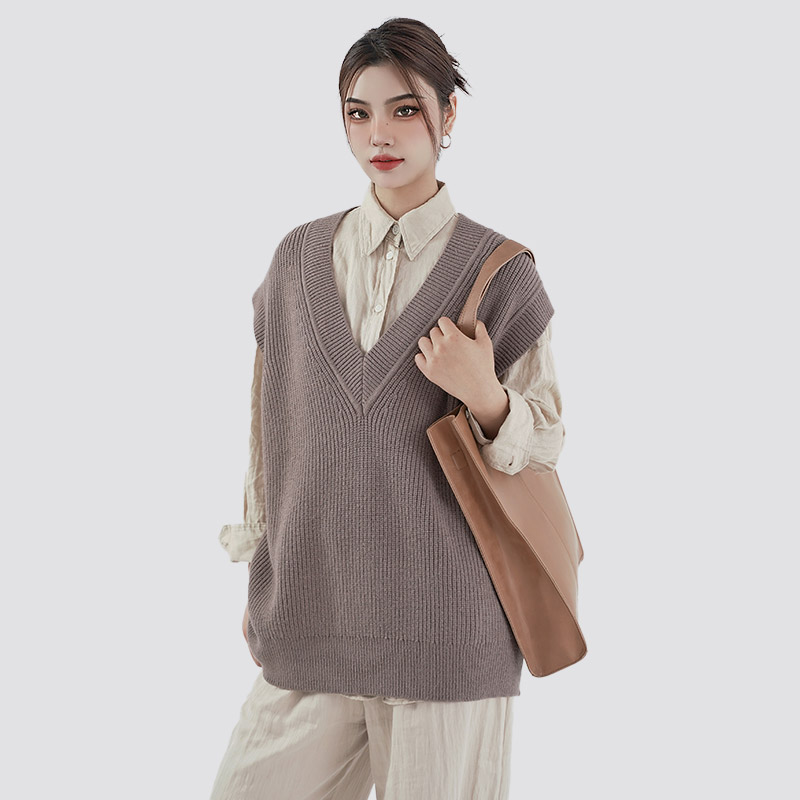Redefining Workwear Basics: The Functional Elegance of the Commuting Purple Bottoming Shirt
1. Understanding the Concept of Bottoming Shirts
Originally developed as layering pieces, bottoming shirts are designed to be worn beneath jackets, cardigans, or suits. Their defining features include a slim fit, soft touch, high elasticity, and low-profile seams—ensuring comfort and ease of movement. As workplace dress codes become increasingly fluid, bottoming shirts are no longer hidden basics but standalone style statements.
The commuting variant of the bottoming shirt introduces additional considerations: temperature regulation, easy maintenance, and a style-neutral silhouette that transitions smoothly from office hours to after-hours.
2. Why Purple? Color Psychology and Urban Aesthetics
The choice of purple in commuting wear isn’t arbitrary. Purple—particularly in medium to muted tones—occupies a unique space between neutral professionalism and subtle individuality. Unlike black, navy, or grey, which dominate office wear, purple communicates quiet confidence and creativity without appearing flamboyant.
From a psychological perspective:
-
Lavender tones evoke calmness and emotional balance.
-
Plum and aubergine suggest depth, intellect, and modern refinement.
When worn as a base layer or minimalist top, a purple bottoming shirt provides visual interest while remaining work-appropriate.
3. Fabrication: The Material Science Behind Comfort and Structure
The success of any bottoming shirt lies in its fabric engineering. The commuting purple bottoming shirt typically leverages a blend of modal, spandex, and combed cotton to achieve the desired balance between stretch, breathability, and drape.
Key material properties include:
-
Moisture management: Modal fibers derived from beech trees offer superior wicking capability, keeping the wearer dry during crowded subway rides or warm office conditions.
-
Shape retention: Spandex or elastane contributes stretch and recovery, ensuring that the shirt contours the body without sagging over time.
-
Skin feel: Fine-gauge knits (usually 32s or 40s) are employed to produce a silky, frictionless surface that prevents irritation during prolonged wear.
Some advanced versions also incorporate antimicrobial finishes or cooling technologies—features highly valued by commuters in warmer climates.

4. Technical Construction: Fit, Cut, and Stitching
The design of a bottoming shirt must account for both aesthetic form and functional movement.
Fit:
Most commuting shirts are tailored close to the body, with a slightly tapered waist and narrow shoulder seams. This allows for clean layering under jackets without bulk.
Neckline:
Crew necks are the most common, offering a professional silhouette. However, mock necks or scoop necks in women's designs are sometimes introduced to accommodate jewelry or seasonal trends.
Stitching:
Flatlock seams reduce friction against the skin. Stretch overlock stitching at cuffs and hems allows for elasticity without distortion. High-quality versions reinforce the neckline with bias tape or double stitching for long-term durability.
Length:
A slightly extended hemline ensures the shirt stays tucked during movement, a crucial feature for professionals on the go.
5. Functional Versatility: From Commute to Conference Room
Unlike seasonal fashion pieces, the commuting purple bottoming shirt is designed for cross-context adaptability.
-
Under a blazer: It acts as a smooth, breathable base without wrinkling the outer layer.
-
With tailored trousers or skirts: It achieves a smart-casual balance appropriate for client meetings or presentations.
-
With jeans and sneakers: On casual Fridays or remote workdays, it lends a relaxed yet polished tone.
Layering options also extend its seasonality. In fall and winter, it works well under cardigans, coats, or scarves. In spring, it becomes a minimalist standalone top, especially when the cut features subtle design details like ribbed cuffs or tonal stitching.
6. Gender-Neutral and Size-Inclusive Design
Modern brands recognize the demand for inclusive fit ranges. Unisex designs of the commuting bottoming shirt use adaptive cuts and stretch materials to accommodate different body shapes while preserving the minimalist aesthetic.
Key inclusive design principles include:
-
Strategic darts or paneling in women’s versions for a tailored fit.
-
Wider shoulder and chest allowances in men’s versions without excess fabric at the waist.
-
Size offerings ranging from XXS to XXL with consistent grading rules.
This inclusivity contributes not only to brand accessibility but also to user comfort and body confidence.
7. Care and Maintenance: Built for Daily Use
Commuters often prioritize ease of maintenance when selecting garments. The purple bottoming shirt is typically machine washable, quick-drying, and resistant to pilling, thanks to blended fibers and refined knitting techniques.
-
Wash cycle: Cold or gentle cycle to preserve elasticity and color.
-
Drying: Air-dry or tumble-dry low to maintain fabric integrity.
-
Ironing: Minimal or no ironing needed if dried flat or hung immediately.
Colorfastness is achieved through reactive dyeing or pigment dyeing techniques that resist fading over repeated washes.
8. Sustainability and Ethical Production
With sustainability becoming a central concern, high-quality bottoming shirts now incorporate:
-
OEKO-TEX® certified dyes to ensure skin safety and environmental compliance.
-
Closed-loop modal production to minimize chemical runoff and resource use.
-
Recycled polyester blends as an alternative to virgin synthetics.
Some emerging brands also adopt on-demand manufacturing models to reduce waste, and promote fair labor practices in their supply chains.

 English
English 中文简体
中文简体 Español
Español












